News
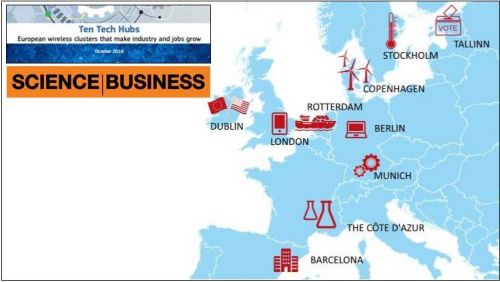
09/11/2016
Barcelona, a Bright Spot in the European Digital Landscape
Barcelona, a Bright Spot in the European Digital Landscape
In a special report commissioned by Huawei, Science Business examines 10 European tech clusters, which provide case studies on the integration of information and communications technologies (ICT) into economy (Science Business is a consultancy company set up in Brussels that publishes original research and analysis on European innovation policy).
This report is not a ranking but, according to its authors, an effort to highlight some especially bright spots in the European digital landscape. Barcelona is among the 10 cities selected: the authors point out, among other things, the policymakers’ willingness to support research, trials and pilots, and not just by providing funding.
It is worth noting that this report mentions the Barcelona Institute of Science and Technology (BIST) as one key player of the city. In this recent alliance of six top Catalan research centres, two of them are located on the campus of the UAB University, the Barcelona Synchrotron Park strategic partner: the High Energy Physics Institute (IFAE) and the Catalan Institute of Nanoscience and Nanotechnology (ICN2).
This report is not a ranking but, according to its authors, an effort to highlight some especially bright spots in the European digital landscape. Barcelona is among the 10 cities selected: the authors point out, among other things, the policymakers’ willingness to support research, trials and pilots, and not just by providing funding.
It is worth noting that this report mentions the Barcelona Institute of Science and Technology (BIST) as one key player of the city. In this recent alliance of six top Catalan research centres, two of them are located on the campus of the UAB University, the Barcelona Synchrotron Park strategic partner: the High Energy Physics Institute (IFAE) and the Catalan Institute of Nanoscience and Nanotechnology (ICN2).
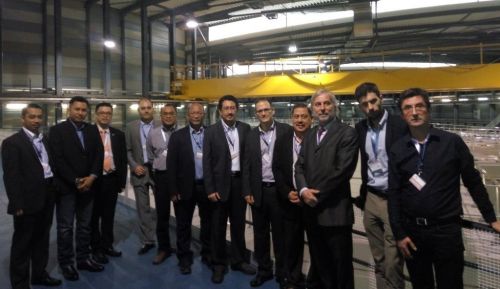
02/11/2016
Malaysia Comes to Discover the Barcelona DC Cluster Initiative Set Up In Barcelona Synchrotron Park
Malaysia Comes to Discover the Barcelona DC Cluster Initiative Set Up In Barcelona Synchrotron Park
With Cyberjaya close to Kuala Lumpur and SIDH project in Sedenak near Singapore, Malaysia has two new parks specially designed to host Data Centers (DC) that make the country a key DC player in South East Asia.
In order to know about similar initiatives, a 7-person delegation representing 3 Malaysian agencies from the DC sector was in BSP on last October 27 to exchange experiences, in particular about the Barcelona DC Cluster project that aims at positioning BSP as a DC hub in South Europe. This delegation was headed by the MdEC state agency in charge of the Malaysian ICT strategy.
Among the 7 companies currently set up in BSP or about to be in (all international, two foreign firms), three of them are DC companies with more than 200 million euros already invested in BSP. In addition to these DCs, BSP completed a new 42,000 sq m plot specially designed to host DCs and provide companies with district cooling, seven telecommunication networks already installed etc. In this project, BSP draws on the technology assessment of B-Barcelona Consulting/BGC, an engineering company specialized, among other things, in the design of mission critical infrastructures and the implementation of energy efficiency strategies as free cooling, direct-to-chip water cooling etc.
It is worth mentioning that INCASÒL strategic analysis director Ramon Forcada and Catalonia Trade & Investment advisor Marc Puyuelo also took part in the meeting (INCASÒL is the public agency in charge of the management of Catalan public lands and Catalonia Trade & Investment aims at attracting foreign direct investments in Barcelona and Catalonia).
Image: during the visit paid to ALBA synchrotron
In order to know about similar initiatives, a 7-person delegation representing 3 Malaysian agencies from the DC sector was in BSP on last October 27 to exchange experiences, in particular about the Barcelona DC Cluster project that aims at positioning BSP as a DC hub in South Europe. This delegation was headed by the MdEC state agency in charge of the Malaysian ICT strategy.
Among the 7 companies currently set up in BSP or about to be in (all international, two foreign firms), three of them are DC companies with more than 200 million euros already invested in BSP. In addition to these DCs, BSP completed a new 42,000 sq m plot specially designed to host DCs and provide companies with district cooling, seven telecommunication networks already installed etc. In this project, BSP draws on the technology assessment of B-Barcelona Consulting/BGC, an engineering company specialized, among other things, in the design of mission critical infrastructures and the implementation of energy efficiency strategies as free cooling, direct-to-chip water cooling etc.
It is worth mentioning that INCASÒL strategic analysis director Ramon Forcada and Catalonia Trade & Investment advisor Marc Puyuelo also took part in the meeting (INCASÒL is the public agency in charge of the management of Catalan public lands and Catalonia Trade & Investment aims at attracting foreign direct investments in Barcelona and Catalonia).
Image: during the visit paid to ALBA synchrotron
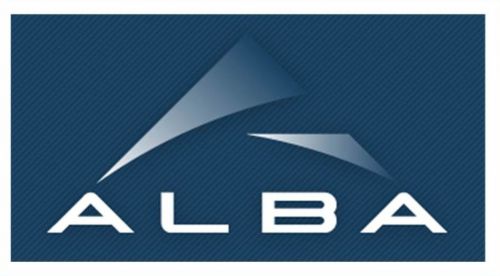
26/10/2016
MIRAS New ALBA Synchrotron Beamline Goes Under Researchers Skin
MIRAS New ALBA Synchrotron Beamline Goes Under Researchers Skin
Last week, the ALBA Synchrotron hosted the first official users at its 8th new beamline, MIRAS. Devoted to synchrotron infrared microspectroscopy (SIRMS), this new beamline is now available to the scientific community for conducting experiments in a wide range of areas such as materials science, biology and biomedicine, geology, cultural heritage or environmental sciences, among others.
This new tool is very powerful detecting and quantifying molecules and its spatial distribution. Therefore, MIRAS is key for defining the chemical composition of materials at a molecular level with a lateral spatial resolution reaching 3 micrometers.
The first researchers from the Institute of Advanced Chemistry of Catalonia (IQAC-CSIC) used the MIRAS beamline for performing an experiment that analyses how different lipid systems, developed in the research group, are located into the skin.
Thanks to the high resolution and large brightness of synchrotron light, it is possible to define the localization of those lipid systems in the different skin layers, generating a chemical map of the sample, where to analyse their level of penetration. The main benefit of this research is to test the effectiveness of these lipid systems as carriers of active ingredients to the different skin layers.
About MIRAS and ALBA in general, you can discover the last scientific highlights, industry collaborations, technical developments, outreach activities of ALBA in the last semi-annual ALBA News magazine issue.
This new tool is very powerful detecting and quantifying molecules and its spatial distribution. Therefore, MIRAS is key for defining the chemical composition of materials at a molecular level with a lateral spatial resolution reaching 3 micrometers.
The first researchers from the Institute of Advanced Chemistry of Catalonia (IQAC-CSIC) used the MIRAS beamline for performing an experiment that analyses how different lipid systems, developed in the research group, are located into the skin.
Thanks to the high resolution and large brightness of synchrotron light, it is possible to define the localization of those lipid systems in the different skin layers, generating a chemical map of the sample, where to analyse their level of penetration. The main benefit of this research is to test the effectiveness of these lipid systems as carriers of active ingredients to the different skin layers.
About MIRAS and ALBA in general, you can discover the last scientific highlights, industry collaborations, technical developments, outreach activities of ALBA in the last semi-annual ALBA News magazine issue.
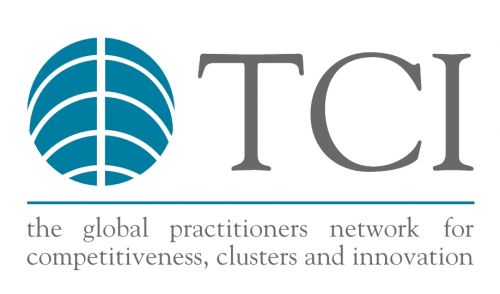
19/10/2016
Christian Ketels: “Thanks to clusters, Catalonia is much more attractive to foreign companies”
Christian Ketels: “Thanks to clusters, Catalonia is much more attractive to foreign companies”
Specialist in cluster policy Christian Ketels joined the 9th annual Catalan clusters meeting hold last month in Barcelona. In an interview with the Catalonia Trade & Investment public agency that works to attract foreign direct investment, he explained the importance of cluster policy in the attractiveness of the region.
Christian Ketels comes from the Institute for Strategy and Competitiveness (Harvard Business School) and is the President of TCI Network, a global platform of experts and organizations on clusters, innovation and competitiveness headquartered in Barcelona.
According to his definition, a cluster is a hotspot of activity in a certain type of sectors. It combines two aspects: it is a group of related industries -not just one sector- and is geographically concentrated.
In his opinion, Catalonia started with cluster efforts earlier than many other parts of Europe, and is globally seen as one of the leaders in this field. And it is still one of the regions that come up with new approaches, for example on using clusters as a platform for internationalization. Today, with more than 20 years of experience in cluster policy, in Catalonia 30 clusters are home to 1,700 firms, accounting for a turnover of 65 billion euros.
In Christian Ketels opinion, Catalonia actually is much more attractive to foreign companies (6,500 are currently set up in Catalonia) thanks to its clusters because they immediately get into an ecosystem of partners rather than just a greenfield site to invest in.
Christian Ketels comes from the Institute for Strategy and Competitiveness (Harvard Business School) and is the President of TCI Network, a global platform of experts and organizations on clusters, innovation and competitiveness headquartered in Barcelona.
According to his definition, a cluster is a hotspot of activity in a certain type of sectors. It combines two aspects: it is a group of related industries -not just one sector- and is geographically concentrated.
In his opinion, Catalonia started with cluster efforts earlier than many other parts of Europe, and is globally seen as one of the leaders in this field. And it is still one of the regions that come up with new approaches, for example on using clusters as a platform for internationalization. Today, with more than 20 years of experience in cluster policy, in Catalonia 30 clusters are home to 1,700 firms, accounting for a turnover of 65 billion euros.
In Christian Ketels opinion, Catalonia actually is much more attractive to foreign companies (6,500 are currently set up in Catalonia) thanks to its clusters because they immediately get into an ecosystem of partners rather than just a greenfield site to invest in.
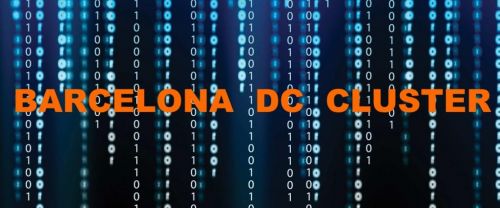
11/10/2016
Barcelona DC Cluster Initiative
Barcelona DC Cluster Initiative
Last week, the second edition of the Big Data Congress took place in Barcelona. It was organized by Big Data CoE Barcelona, an initiative from the Eurecat technology center with the support of Oracle, the Catalan government and the city council of Barcelona with the aim of building, developing and providing tools, data sets and value-added Big Data capabilities to enable companies on defining, testing and validating Big Data models before its final implementation.
This event gives an opportunity to mention the importance of Barcelona in the field of Big Data and the Barcelona Synchrotron Park (BSP) challenge of hosting Data Centers (DCs).
According to the European Commission Data Landscape initiative whose purpose is to identify the economic actors related with data, Catalonia is among the European regions with the largest number of companies and entities dedicated to Big Data. Catalonia hosts concretely 57 initiatives, 50 of them in Barcelona, more than London (48) or Brussels (55).
In addition to Nestlé or Zurich that built their Big Data innovation centers in Barcelona, companies such as IBM or T-Systems have DCs in BSP, locally known as Parc de l’Alba in Cerdanyola del Vallès.
Along with these DCs already operative, BSP is completing a 42,000 sqm plot specially designed to host DCs including a district cooling system, 7 telecommunication operators etc. Malaysia is interested in this so-called Barcelona DC Cluster initiative and will send a delegation to BSP to know more about it at the end of the month.
This event gives an opportunity to mention the importance of Barcelona in the field of Big Data and the Barcelona Synchrotron Park (BSP) challenge of hosting Data Centers (DCs).
According to the European Commission Data Landscape initiative whose purpose is to identify the economic actors related with data, Catalonia is among the European regions with the largest number of companies and entities dedicated to Big Data. Catalonia hosts concretely 57 initiatives, 50 of them in Barcelona, more than London (48) or Brussels (55).
In addition to Nestlé or Zurich that built their Big Data innovation centers in Barcelona, companies such as IBM or T-Systems have DCs in BSP, locally known as Parc de l’Alba in Cerdanyola del Vallès.
Along with these DCs already operative, BSP is completing a 42,000 sqm plot specially designed to host DCs including a district cooling system, 7 telecommunication operators etc. Malaysia is interested in this so-called Barcelona DC Cluster initiative and will send a delegation to BSP to know more about it at the end of the month.

06/10/2016
Barcelona Synchrotron Park Sponsors the Fifth Ideas Generation Program
Barcelona Synchrotron Park Sponsors the Fifth Ideas Generation Program
The main mission of the Universitat Autònoma de Barcelona Research Park (PRUAB), which is associated with Barcelona Synchrotron Park, is technology transfer: how to transform the results achieved in UAB research centers into economic growth (jobs, patents, start-up companies…).
In this sense, an original tool developed by PRUAB in the last 4 years is the annual Ideas Generation Program based on: 1) Collecting technology challenges posed by local companies from a given sector, 2) Inspiring solutions from the UAB scientific community, 3) Training researchers to help them make their proposal a reality (assessment to elaborate a business plan, create a start-up etc.), 4) Evaluating these projects by experts, 5) Rewarding the best projects.
In the last four editions focused on ICT technologies, biotechnologies, environment and aerospace sectors, respectively, 52 projects have been generated and 8 of them have been transformed into currently operative companies that could get a global amount of 900,000 euros founds.
Barcelona Synchrotron Park supports this initiative that helps the economic development of the local territory and sponsors the fifth program, which this year is devoted to cultural industries.
The new edition starts this week with the presentation of the technology challenges (12 challenges this year) and will conclude on December 1 with the awards ceremony.
In this sense, an original tool developed by PRUAB in the last 4 years is the annual Ideas Generation Program based on: 1) Collecting technology challenges posed by local companies from a given sector, 2) Inspiring solutions from the UAB scientific community, 3) Training researchers to help them make their proposal a reality (assessment to elaborate a business plan, create a start-up etc.), 4) Evaluating these projects by experts, 5) Rewarding the best projects.
In the last four editions focused on ICT technologies, biotechnologies, environment and aerospace sectors, respectively, 52 projects have been generated and 8 of them have been transformed into currently operative companies that could get a global amount of 900,000 euros founds.
Barcelona Synchrotron Park supports this initiative that helps the economic development of the local territory and sponsors the fifth program, which this year is devoted to cultural industries.
The new edition starts this week with the presentation of the technology challenges (12 challenges this year) and will conclude on December 1 with the awards ceremony.









